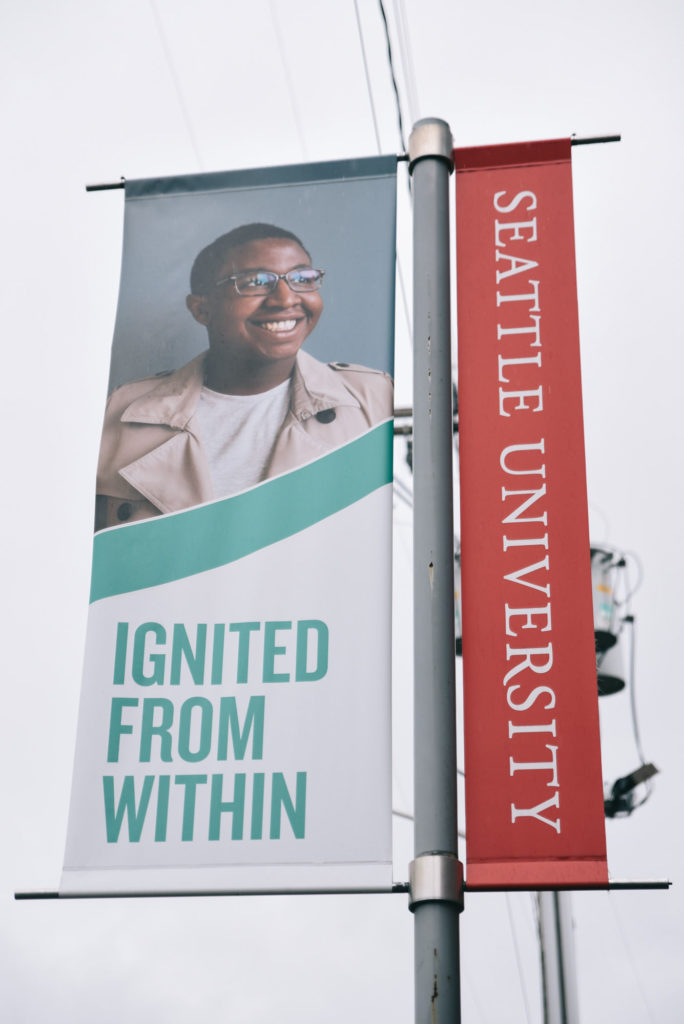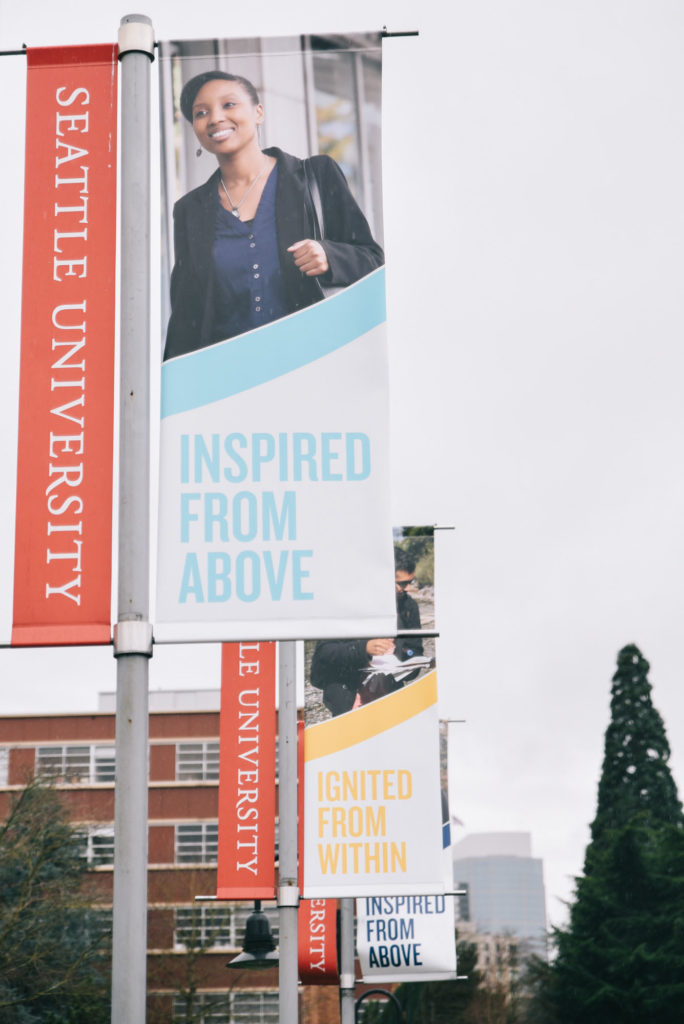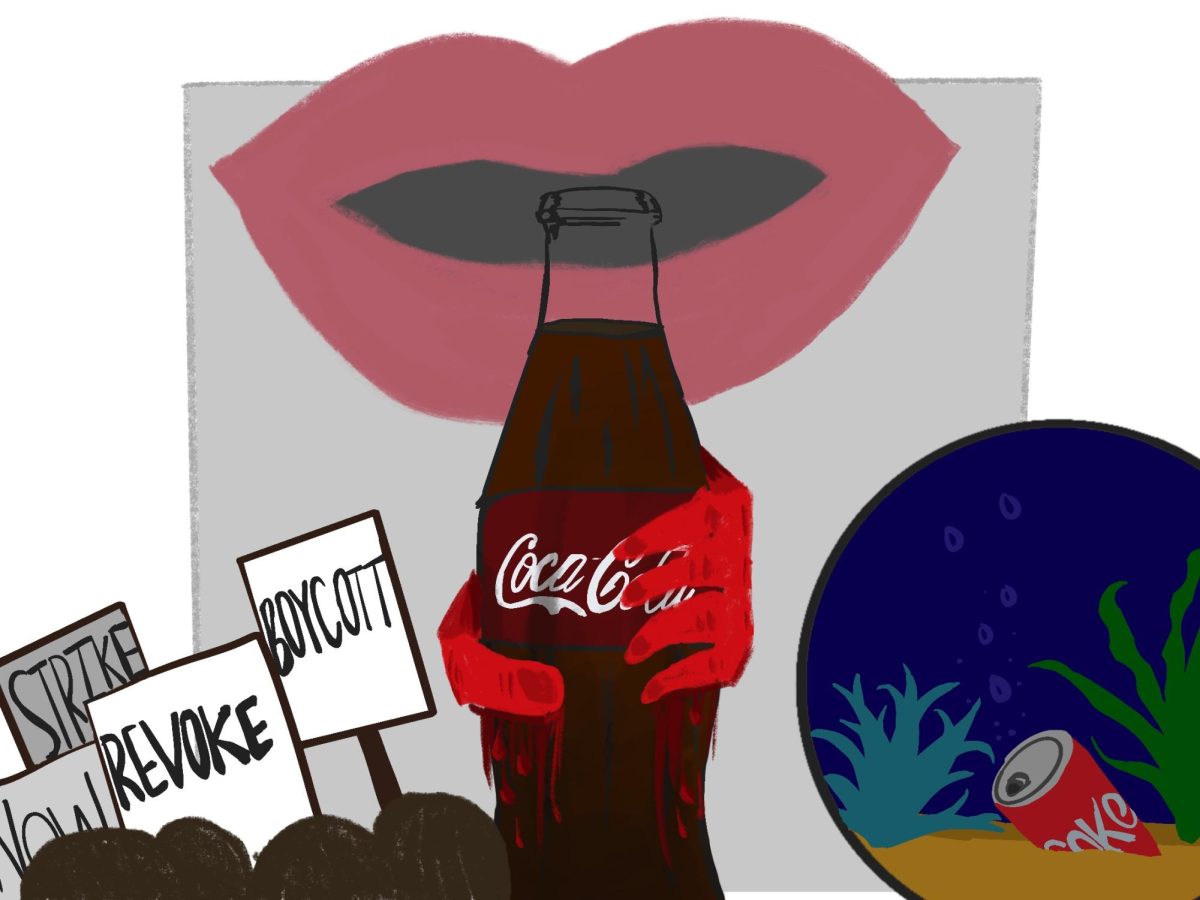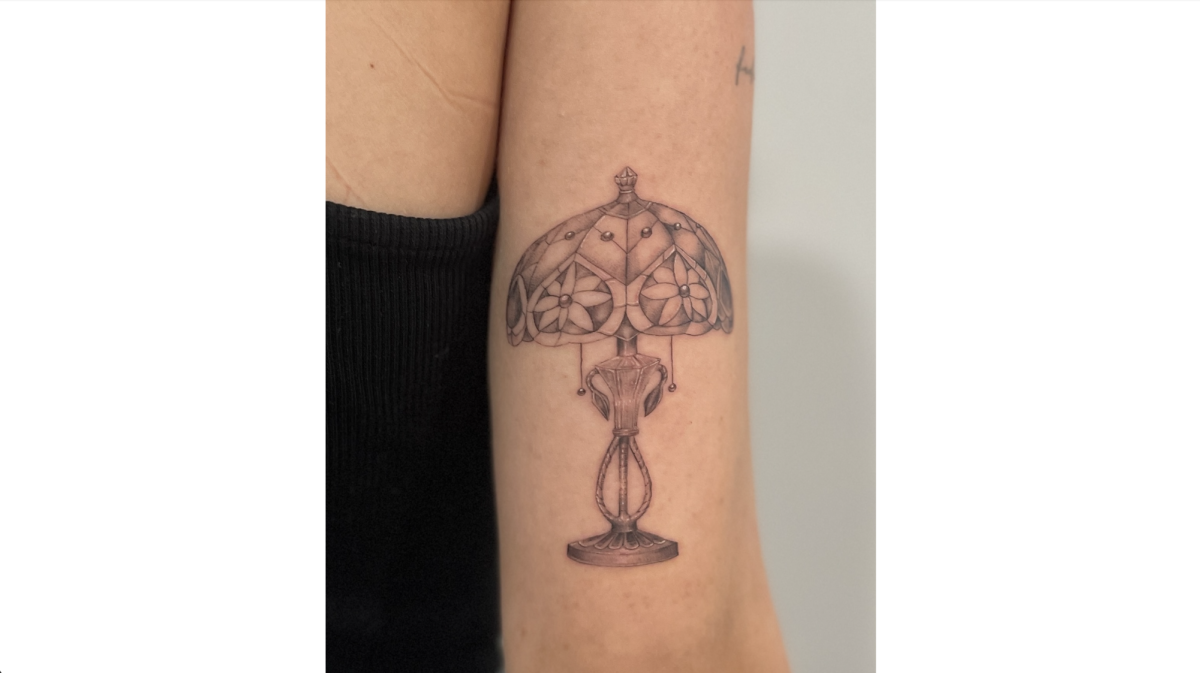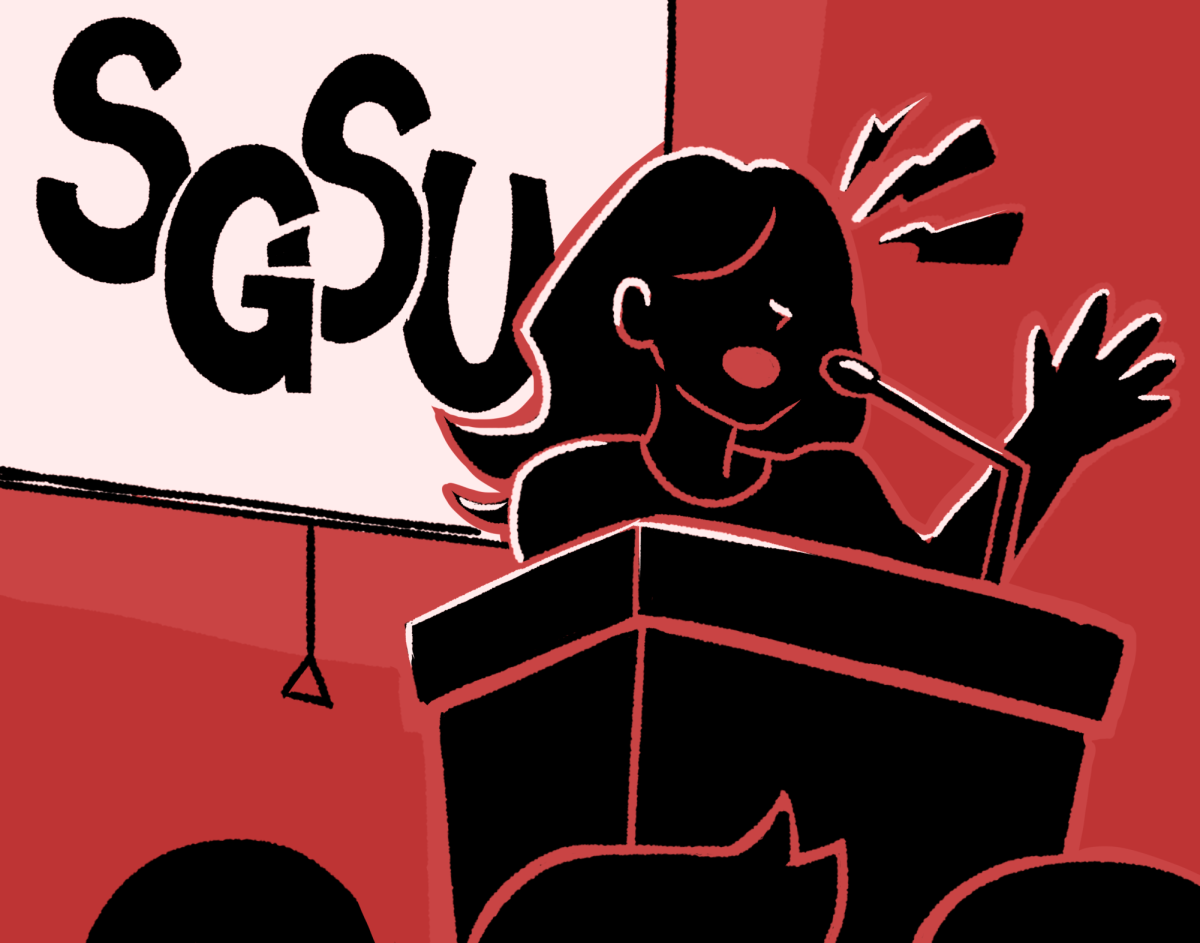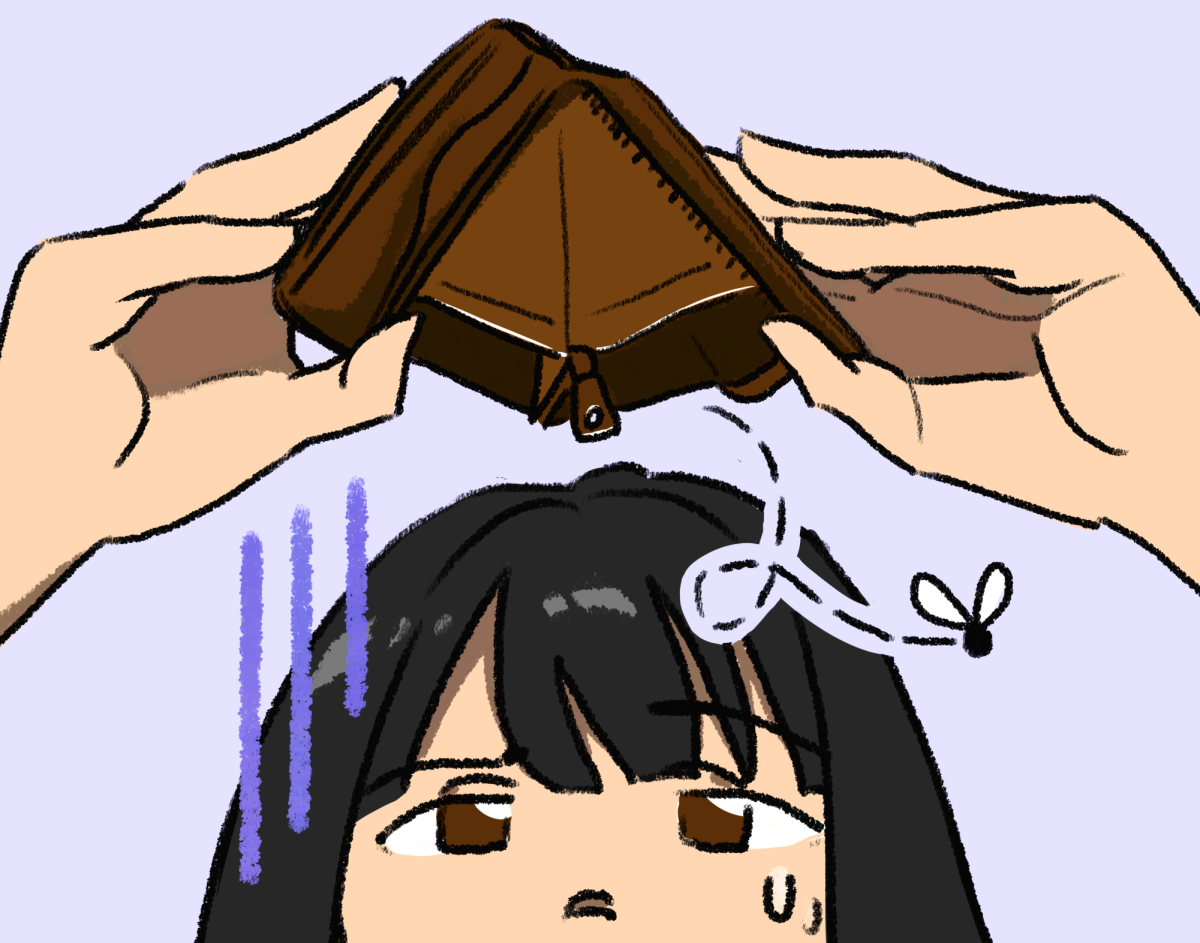When it comes to branding a university, authenticity and consistency are key. However, when it comes to offering one unified experience to people of all different identities, problems of representation and
tokenization arise.
In Seattle University’s brand guidelines, touch upon the need for unity. According to the guidelines: “amid the complexity that is SU, there are very few times we ask our diverse community to be single-minded. This [branding] happens to be one of them.”
Olivia Smith is an alum from the class of 2016, Sullivan Leader and 2015 Washington State Truman scholar. She was featured on the Seattle U website and on the cover of the Seattle U magazine, saying that this single-mindedness is a disservice to students of color. The marketing team, though approachable and down to earth in Smith’s experiences, falls victim to tokenization.
“One mold of a student of color is used as the ‘ideal’ student…this is the way to be a ‘proper and respectable’ student of color on campus,” Smith said. “When other students of color live out their truths differently than the ideal student, that ideal student is used as weapon to demonize, discredit and invalidate other students of colors concerns.”
Smith explained that students of color can be weaponized and forced into a distinct model, creating what is deemed as the “ideal” student.
“I believe SU tokenizes students of color, and yet, that is not something that is unique to SU. It happens with many institutions of higher education,” Smith said. “The feeling of always being on display, and moreover the way the tokenizing of students of color leads to the weaponization of students of color, it silences them from raising concerns over issues within the university community.”
When presenting diversity in a marketing capacity, where single-mindedness is held in high regard, the challenge of developing a Seattle U brand under one uniform Redhawk experience presents difficulties to staff when considering students of multiple identities.
“We want to make sure that we have an accurate balance of student of colors versus white students [in our publications],” said Senior Associate Director of Admission Katie O’Brian. “Often, we will say we are featuring too many students of color…it’s a fine line to walk. If we’re recruiting potential students, we want to make sure that they see themselves represented in our student body.”
The View Book and Academic Guide are the most substantial pieces created by the Admissions Office that feature students.
Seattle University is more statistically diverse than some of its counterparts. Seattle U is about 56 percent White, four percent Black, 23 percent Asian, 11 Percent Hispanic, two percent Native American, three percent Pacific Islander and 11 percent International Students. In comparison, Gonzaga’s undergraduate student population is roughly 72 percent White, 10 percent Hispanic/Latino, five percent Asian and one percent or lower Black, Indigenous or Pacific Islander identified.
“We want to market this school to bring those diverse students of color to our campus…I recruit in Chicago. If I were to go to a school in Chicago with a 98 percent enrollment rate of African Americans and show them a brochure that had zero African American students or Hispanic students, that’s going to connect in zero ways.” Patrick McCarthy said, Assistant Director of Admissions and Marketing and Outreach. “For them to be able see those students of color, that we very thoughtfully put in our brochures…it gives those students an accurate picture…to see that, if they do come to Seattle U and hopefully make this place more diverse and more inclusive and more equitable than it already is, that they’ll be able to add to that instead of not being able to fit in to that.
In providing resources for students of color on Seattle U’s campus, the marketing team aims to remain true and authentic.
“It’s interesting going to college fairs, where I will walk past a school that I know to be to be maybe over 80 percent white, and seeing a big pop-up stand with a group of students and two of them are students of color. It’s something many schools struggle with: how do you become more diverse if that doesn’t already exist,” O’Brien said. “If your school doesn’t have the resources for students of color…then it doesn’t seem fair to market and try to draw all these students in without caring for them once they
get there.”
Students of color can access the resources in the Office of Multicultural Affairs, navigate faith at Campus Ministry and join the first-generation and veteran community at the Outreach Center at Seattle U.
Even though these departments offer resources for students of color, some students believe there is still more to be done to make Seattle U the campus they have been marketed.
“I definitely expected more students of color when I came here…it’s definitely misleading. I think one of the big issues is that they just represent them in a marketing sense, but there is not a lot advocating for students of color. It gives off a false sense of security in a sense,” sophomore Social Work major Cameron Payne said.
According to Institutional Research from 2016, 61 percent of Seattle U professors identify as white. A eurocentric curriculum paired with primarily white professors perpetuate an environment that does not serve the community of color at Seattle U in the way it is expected. The conversation of tokenization does not end with the nuances of marketing.
“There is an issue of tokenizing students in marketing, and it happens in the classroom a lot from my own experience and from the people I’ve talked to,” Payne said. “I’m Palestinian…and I will find that teachers will pick me to speak on very intense issues in the Middle East that I just don’t really know enough or want to talk about.”
Senior Communications and Media major Phoebe Kim shared the challenge of wanting to interact and see people similar to herself, but how she often wasn’t able to fulfill this desire.
“Many times in my experience here did I question why there weren’t more individuals of color in this community, especially when surrounded by rich cultures just outside our campus. I definitely
craved to see more people who looked like me, and like my other brothers and sisters of color,” Kim said.
Seattle U is located near the International District, Yesler Terrace and other neighborhoods predominantly inhabited by people of color .
“I know this can be a tricky balance, as merely representing folks of color across our campus and bringing them into the spotlight can quickly be seen as nothing more than tokenization, but not doing so is inherently problematic in itself,” Kim said. “As I interned [for Marketing and Communications]…and helped strategize new marketing plans, I kept this in mind at all times. It was a unique platform I wanted to take advantage of, so I could do at least a small part.”
For the admissions team, this is also at the highest concern in their work as well. “We recognize that we’re not perfect as an institution…this is not a utopia of a place. We are a predominately white institution. It’s about how do we create spaces of diversity and inclusion here on campus? We try to continually educate ourselves about the variest blind spots we have in our office and who do we serve,” O’Brien said.
Admissions curates and uses photos from Marketing and Communications, as do other on-campus departments. Marketing and Communications is responsible for taking photos, videos and putting up banners and other campus advertisements in tandem with the Seattle U brand.
“We take on hundreds of projects each year for the university and specific colleges, schools and divisions in addition to other priorities we have,” Dean Forbes, the spokesperson for Marketing and Communication, said. “Our relatively small team is talented and works hard to be on target, but we recognize that is probably not possible every single time—and when it is not we seek to understand why and learn from it.”
In terms of the Marketing and Communications policy regarding student’s being used for marketing materials, the department does ask students to sign a Seattle U release form for photography and videography materials.
“Additionally, we get signed forms for all photo shoots or video profiles with individual students, such as a portrait or student profile, and for all ‘brand shoots’ where the students have agreed to be part of a photo or video shoot,” Forbes said.
Senior Reitrea Crawford did not know her photo, which she consented for use in a “legacy event” campaign with her law school alumni family member, was used on the lamppost banners around campus.
“It was uncomfortable because I didn’t know it was up there…instead of hearing it from other people, would have been better. I never felt good about it,” Crawford said. “I have been photographed outside of that too, with my friend who is also a minority. You definitely feel like you’re there [in marketing materials] for a purpose.”
From the minute they receive their first glossy admissions material in the mail, until the time they graduate at Seattle U, students of color navigate an area of conflicting mission statements and marketing advertisements in a campus that, at times, still does not feel like theirs.
“We cannot be settling for just a few resources,” said Payne. “The mission and the curriculum and all the resources and facilities are directed mostly for white American students.”
Jacqueline can be reached at
[email protected]





